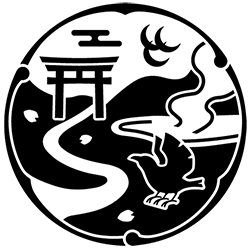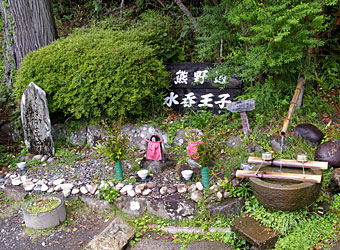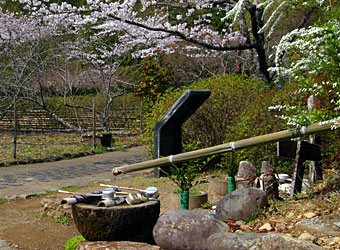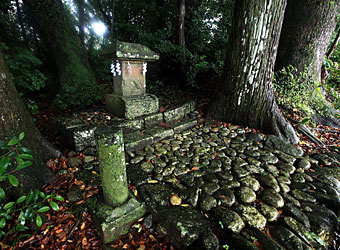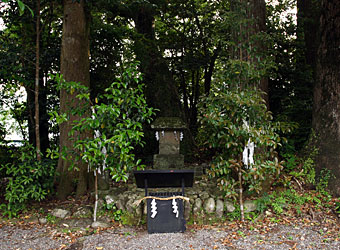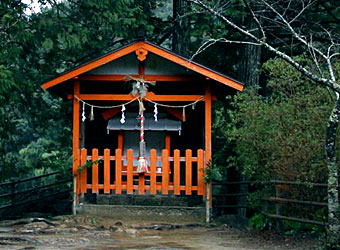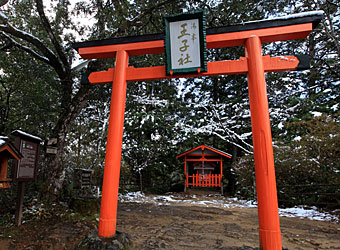What is an “Oji”? (Tanabe City Kumano Tourism Bureau)
Inohana-Oji
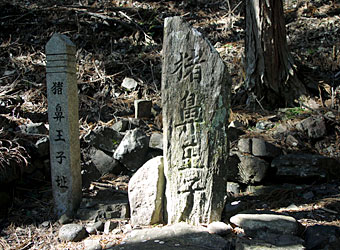
A short walk from the Shinto arch right in front of the Hosshinmon-Oji shrine sits Inohana-Oji quietly amidst the trees.
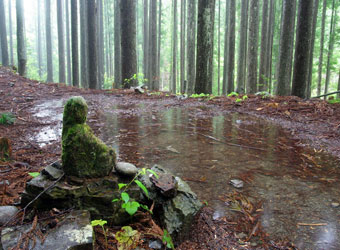
Old literature makes reference to a place called “Inohana”. The shrine was built before the 1200 visit of the Emperor Gotoba.
Hosshinmon-Oji
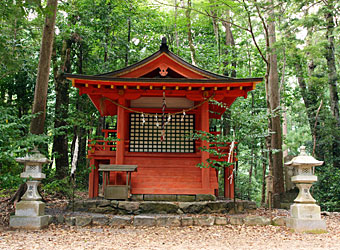
Hosshinmon-Oji 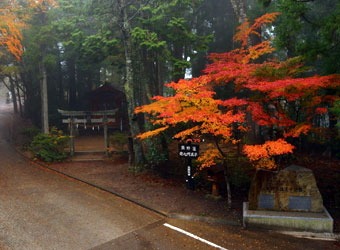
Autumn leaves beside Hosshinmon-Oji
Hosshin is short for hotsubodaishin, which means to “long for salvation”.
After the deities were enshrined together at the end of the Meiji Period, only a monument stood on the site of this shrine; the current structures were built in more recent times. There are five shrines. The monument can be found on the right side of the sanctuary. The Hosshinmon Gate from which the shrine gets its name used to be on the mountain along the approach to the shrine. The remains of many foundations for Shinto arches and other structures of long ago, as well as stones that were used to make those foundations can be found there.
The path on the right leads up from Inohana-Oji. Many people have walked it in its time. It’ s curious to think what might have happened at the end of this ancient road that inspired so many people to travel here to heal their woes with faith.
The Enigma of Hosshinmon-Oji
A miniature Shinto arch, called a “torii”, stands amongst the brush next to the arches of Hosshinmon-Oji. But, what is it doing there?
Local storytellers say it “stands there in the place of revered ‘trees’ that were burned down by mistake.” Even so, it is rather small and quite modest.
If you visit Hosshinmon-Oji, try to find it. Most regretfully, no one knows where this tiny torii is.
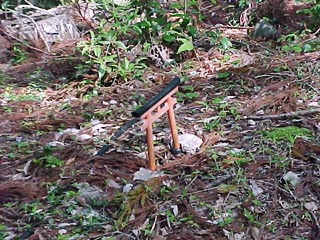
Site of the Home of Namubo
Off to the right of the Hosshinmon-Oji sanctuary stood the home of the Buddhist nun, Bikuni Kumano. The 12th century poet and scholar Sadaie Fujiwara is said to have slept here in 1201. Because of changes in the nearby terrain, traces of the site can no longer be seen today.
Poem by Teika Fujiwara
“I’ ve managed at last today to attain the fruitful land,trying never to return to the six realms of existence.”
The poem tells of the resoluteness to never return to the mortal reincarnation of the six realms of existence once finally attaining Buddhahood. The six realms of existence are beings in hell, hungry ghosts, beasts, asura (demigods), humans, deva (heavenly beings).
Mizunomi-Oji
This monument in chlorite stands on the grounds of an elementary school annex. According to ancient records, the place was known as “Naisonomi”. It became known as “Mizunomi” in the early Edo Period.
Fushiogami-Oji
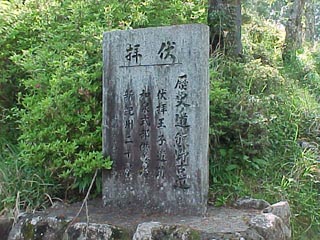
The letters “歴史道” (which literally means “ancient route”) mentioned on this monument are Kumano Kodo, Okuno-hosomichi and Nakasen-do.
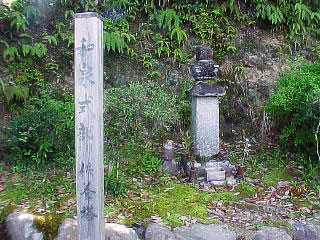
It is said that the Heian Period poetess, Shikibu Izumi, kneeled down and prayed here. A memorial stands to the poetess (foreground).
The Story of Shikibu Izumi
While on pilgrimage to Kumano, Shikibu Izumi was nearing Fushiogami when suddenly night fell. Believing their no time to pray, she read a poem.
“Beneath unclear skies, my body obscured by drifting clouds, I am saddened that my monthly obstruction has begun.”
That night, the Kumano Deities appeared before her and warned,
“How could the gods who mingles with the dust suffer beause of your monthly obstruction?.”
Shikibu was able to offer her prayers.
This story was told by followers of the High Priest Ippen who use Shikibu Izumi to describe the Kumano Deities as one which “does not question faith, wealth or rebuke the impurity of women.”
Haraido-Oji
This shrine is found on the left just beyond the Shinto arch behind Kumano Hongu Taisha. Travelers on pilgrimage purified themselves of their sins here. As can be seen in the above image, the shrine sits quietly under the protection of the large oak (Quercus gilva) standing behind it.
Yunomine-Oji
This shrine did not exist during the heydays of the Kumano pilgrimages, although literature housed in Niwa-dera Temple mentions the shrine as having existed at the end of the Kamakura Period. It is presumed that the shrine was built when the area became established as a bathing spot. It became popular in the Edo Period as the number of worshipers who passed from Mikoshi Pass through Kakihara-no-Yado and Yunomine increased. Originally, the sanctuary was located on the right side of Toko-ji Temple, but it was lost to fire in May 1903. As seen in the above image, the small shrine sits on the hill behind the temple. (The original site is designated a Cultural Property by Wakayama Prefecture and can be found behind Toko-ji Temple and the Yunomine Public Bathhouse.)
